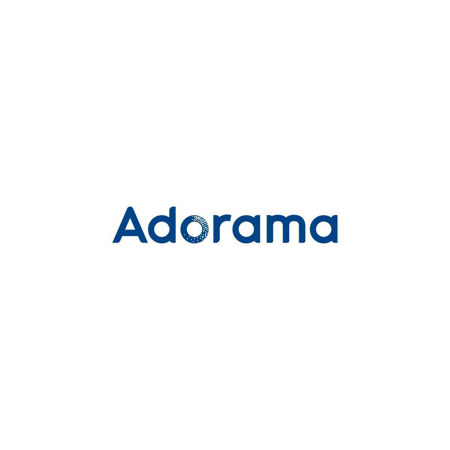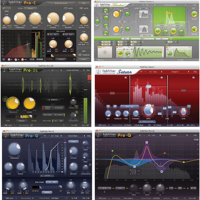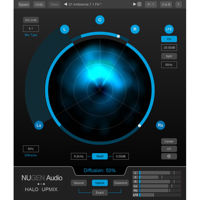
RTW SW20002 Loudness and SPL Display Module Software License
Key Features
- Achieve perfect audio levels with advanced loudness tools, ensuring your mixes meet EBU R128 and ITU BS.1771 standards.
- Utilize the intuitive user interface with customizable bar graphs for precise real-time monitoring of M, S, and I loudness values.
- Enhance your audio editing with flexible integration times, from 200 ms to 2000 ms, for detailed sound adjustments.
- Gain full control over your sound with programmable loudness modes, including ATSC A/85 and ARIB, tailored to your specific needs.
- Optimize your workflow with multi-track support, allowing for detailed analysis and adjustment of individual channel loudness.
- Experience exceptional value for money with comprehensive SPL Meter Mode features, offering various weighting filters like K-filter and A-weighting.
Need help? Ask our experts.
Reviews about this item
Review Summary
RTW SW20002 Specifications
Requirements
TouchMonitor TM7, TMR7 or TM9
Loudness Mode
EBU R128
ITU BS.1771
ATSC A/85
ARIB
OP-59 - programmable
AGCOM - programmable Customer SpecificDisplays
Bar graphs for each single channel (can be combined with PPM bar graphs)
M bar graph (Momentary - summation of momentary loudness values of all channels for a short span of time)
S bar graph (Short - loudness summation value of an adjustable dynamic time frame)
I-Bar graph (Integrated - long term loudness value infinite or manual control)
Adjustable tolerance range for M, S, INumerical Display
For M, S, I values (labeling adjustable)
For LRA, TPmax, Mmax, Smax valuesScale
Loudness Scale:
EBU+9: +9 to -18 LU
EBU+18: +18 to -36 LU
EBU+9a: 14 to -41 LUFS
EBU+18a: -5 to -59 LUFS
EBU0: 0 to -60 LUFS
ITU+9: +9 to -18 LU (Loudness Units)
ITU0: 0 to -30 LKFS
ATSC0: 0 to -60 LKFS
ATSC0a: 0 to -30 LKFSWeighting Filter
K filter acc. to ITU BS.1770
Target
Level: -23 LUFS; adjustable from -10 to -30 LUFS
Time & Gate
Momentary:
Window Time: adjustable from 200 ms to 1000 ms in steps of 100 ms
Integration Time: IEC 125 ms Fast, 250ms (IRT), 500ms, 750ms, IEC 1000 ms Slow, 1500 ms, 2000 ms selectable
Short:
Integration Time: 3s; time window adjustable from 1 to 20s insteps of 1sTime & Gate (Contd.)
Integrated:
Silence Gate: -70,0 LUFS; adjustable from -80,0 LUFS to-40,0 LUFS in steps of 0.5 LUFS, switchable
Relative Gate: -10,0 LU; adjustable from -40,0 LU to 0 LU insteps of 0.5 LUFS, switchableLeveling Adjustment
For the Summation:
0.0 dB (L, R, C), adjustable between -3 and+3 dB in steps of 0.5 dB
+1.5 dB (LS, RS, LSR, RSR), adjustable between -3 and +3 dB in steps of 0.5 dB
Off (LFE), selectable: Off, 0 dB, 10 dBLoudness Test Time Control
Start:
Functions: Autostart after preset load, autostart with gate, autostart with gate and autoreset, manually via keys or GPI
Level for Gate: -70,0 LUFS/LKFS; adjustable from -85 to-10 LUFS/LKFS in steps of 0.5 LUFS/LKFSLoudness Test Time Control (Contd.)
Stop:
Functions: manually via keys or GPI, autostop with gate, autostop with gate and time
Level for Gate: -70,0 LUFS/LKFS; adjustable from -85 to -10 LUFS/LKFS in steps of 0.5 LUFS/LKFS
Time for Gate: 1s; adjustable from 1 to 15s in steps of 1sLoudness Range Instrument (LRA)
Display: Graphical display of the Loudness Range
Mode: Selectable: LRA Bar, MagicLRA, MagicLRA + I, MagicLRA + I + Num
Scale Range: Selectable: 6 LU, 10 LU, 20 LU, 30 LULoudness Range Instrument (LRA) (Contd.)
LRA Low Range: 2 LU; adjustable from 1 to 20 LU in steps of 1 LU
Comfort Zone: 4 LU; adjustable from 1 to 20 LU in steps of 1 LU
LRA High Range: Depends on the selected scale range and the spread of the comfort zone
Colors: Selectable for each rangeSPL Meter Mode
Display: Bar graphs for each single channel (can be combined with PPM bargraphs)
Summation bargraph
Reference Point: Adjustable from 68 to 88 dB in steps of 1 dB
Weighting: Linear, A (Leq(A)), C, CCIR (Leq(M)), k
Integration Time: Fast (125ms), Slow (1s)
| Models | SKU: NA1133204 MFR: 11-33204 $699.00 $869.00 Save:$170.00 (20%) Special Order Generally ships in 7-14 days, subject to availability | ||
|---|---|---|---|
| Operating System | Macintosh, PC/Windows | Macintosh, PC/Windows | Macintosh, PC/Windows |
| Delivery Method | Download | Download | Download |
| Version Type | Plug-In | Plug-In | Plug-In |
About RTW SW20002
Loudness Analysis and Handling with Easy to Read Instruments
Graphical and numerical instruments for loudness measurements according to current standards.
The Loudness and SPL Display license expands the basic 4-channel PPM with graphical and numerical instruments for Loudness measurements as described in current guidelines (EBU R128, ITU-R BS.1770-4/1771-1, ATSC A/85, ARIB, OP-59, AGCOM, CALM, LEQ(M), TASA, SAWA), and the LRA instrument for the graphical display of the Loudness Range. A customer-specific mode allows the user to modify parameters. Dialnorm values can be measured with activated Multichannel Mode license (SW20001).
If you additionally activate the Timecode Reader license (SW20008), you are able to execute timecode-based loudness measurements and loudness recalculation.
Loudness Sum
With the Loudness Sum instrument you get a bar graph display of the summed Loudness values M, S, and/or I of a Loudness measurement acc. to EBU R128, ITU BS.1770-4/1771-1, ARIB, ATSC A/85, OP-59, AGCOM, CALM Act, LEQ(M), TASA, SAWA, or specified by customer. A SPL meter is also included.
Loudness Num
With the Loudness Num instrument you can monitor some or all relevant values of a loudness measurement on a numerical display: M, S, I, LRA, TPmax, Mmax, Smax, Itime.
LRA (Loudness Range)
The LRA (Loudness Range) instrument displays a graphical representation of the loudness variances within short time periods. These are measured against the Loudness Range (LRA) descriptor specified in EBU R 128. It is used to show whether a program has a continuously constant loudness or a high variation between low and high level components. It allows for making assumptions on whether the program has seen or requires dynamic processing with regard to the intended distribution path.
Dialnorm
The Dialnorm instrument can calculate and show Dialnorm values from its digital input signals. Dialnorm is used in film sound mixing and describes the normalization of the dialog loudness level (dialogue normalization) with respect to a certain reference monitoring level (-31 dBFS in surround applications).
Applications
• Control your program according to the requirements resp. the delivery standards and be loudness compliant
• Keep your eyes on the summed, maximum, and true peak values
• Monitor individual program parts, complete programs, or the whole broadcast
• Evaluate the dynamic of your program in regard to the distribution path
• Identify, if the program needs or has seen processing
• Get information for normalizing dialog loudness level in film sound mixing
RTW SW20002 Features
- Achieve perfect audio levels with advanced loudness tools, ensuring your mixes meet EBU R128 and ITU BS.1771 standards
- Utilize the intuitive user interface with customizable bar graphs for precise real-time monitoring of M, S, and I loudness values
- Enhance your audio editing with flexible integration times, from 200 ms to 2000 ms, for detailed sound adjustments
- Gain full control over your sound with programmable loudness modes, including ATSC A/85 and ARIB, tailored to your specific needs
- Optimize your workflow with multi-track support, allowing for detailed analysis and adjustment of individual channel loudness
- Experience exceptional value for money with comprehensive SPL Meter Mode features, offering various weighting filters like K-filter and A-weighting
Key Features
- Achieve perfect audio levels with advanced loudness tools, ensuring your mixes meet EBU R128 and ITU BS.1771 standards.
- Utilize the intuitive user interface with customizable bar graphs for precise real-time monitoring of M, S, and I loudness values.
- Enhance your audio editing with flexible integration times, from 200 ms to 2000 ms, for detailed sound adjustments.
- Gain full control over your sound with programmable loudness modes, including ATSC A/85 and ARIB, tailored to your specific needs.
- Optimize your workflow with multi-track support, allowing for detailed analysis and adjustment of individual channel loudness.
- Experience exceptional value for money with comprehensive SPL Meter Mode features, offering various weighting filters like K-filter and A-weighting.
What's in the box:
- RTW SW20002 Loudness and SPL Display Module Software License



